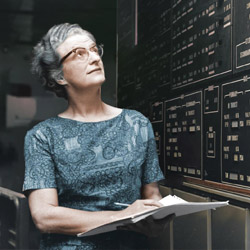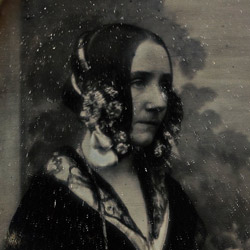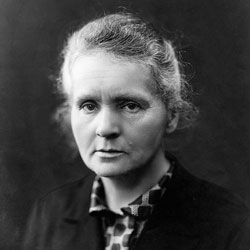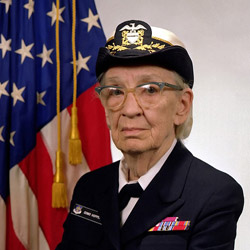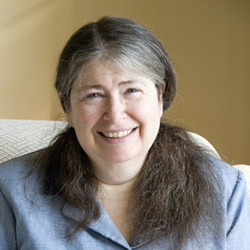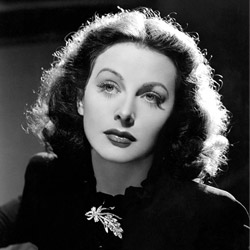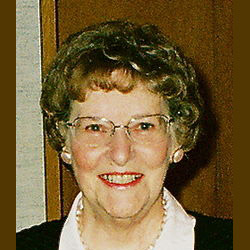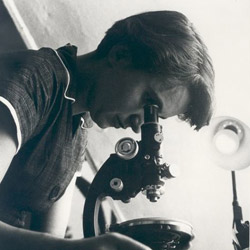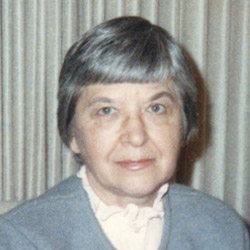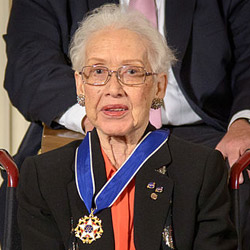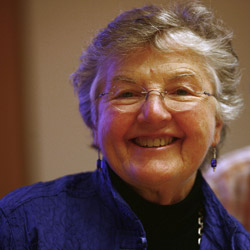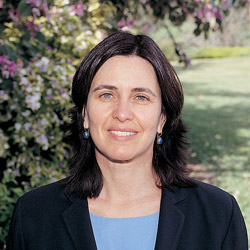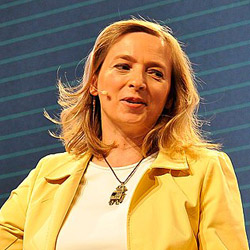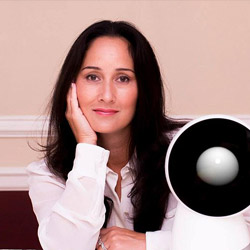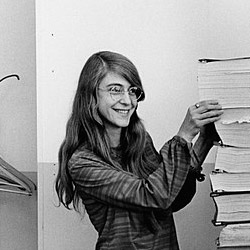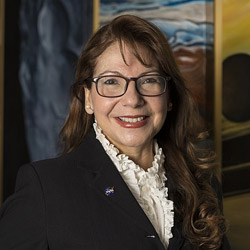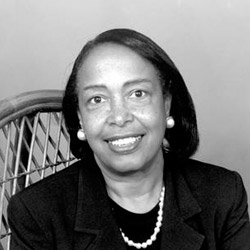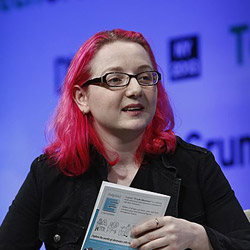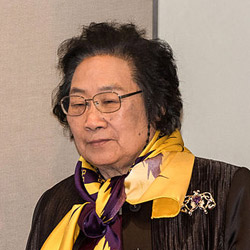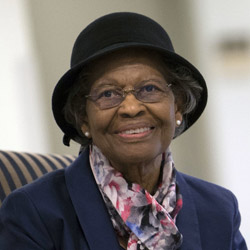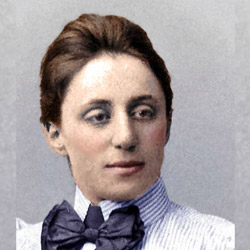Throughout history, many women have made significant contributions in the STEM field that have benefited our world. The following is a list of 25 women who have made remarkable discoveries—saving lives, discovering planets, or creating inventions. Through research and discovery, grit, and determination, these women are notable influencers that inspire us to continue creating a legacy in the STEM field.
1. Nancy Grace Roman
Nancy Grace Roman played a crucial role in creating the Hubble Space Telescope. The Hubble Space Telescope is a space telescope that was launched into low Earth orbit in 1990 and is still in operation. New scientific instruments have been added to upgrade the telescope. In the Hubble Space Telescope, detailed visible light images can be seen, and stars, planets, and galaxies can be observed. Nancy Grace Roman also created NASA’s space astronomy program and contributed significantly to the categorization and movements of stars.
Photo: NASA/ESA, CC BY 2.0, via Wikimedia Commons
2. Ada Lovelace
Augusta Ada Byron Lovelace is called the world’s first computer programmer. She is known for her work on the Analytical Engine. The Analytical Engine was a general-purpose computer designed by the English mathematician Charles Babbage. Ada was the first to recognize that the machine might be used for more than just calculations, and she published the first algorithm designed for such a computer.
Photo: Antoine Claudet, Public domain, via Wikimedia Commons
3. Madame Marie Curie
Marie Curie discovered the elements polonium and radium. She invented a small mobile X-ray unit to provide X-ray services to field hospitals during World War I. Marie Curie directed laboratories for radiation research and biological research. She contributed to the development of treatments for cancer.
Photo: Henri Manuel, Public domain, via Wikimedia Commons
4. Grace Hopper
Grace Hopper co-invented COBOL. COBOL is the first universal programming language used in business and government. She also designed Harvard’s Mark I Computer and invented the compiler. The compiler translated written language into computer coding. Grace Hopper also came up with the words “bug” and “debugging.”
Photo: James S. Davis, Public domain, via Wikimedia Commons
5. Radia Perlman
Radia Perlman invented the algorithm for the spanning-tree protocol (STP). The Spanning Tree Protocol (STP) is a network protocol that creates a logical topology without loops for Ethernet networks. She is called “The Mother of the Internet” because of her contribution.
Photo: Scientist-100 at English Wikipedia, Public domain, via Wikimedia Commons
6. Hedy Lamarr
Hedy Lamarr’s idea led to the creation of wireless technologies such as Bluetooth and Wi-Fi. With the help of George Antheil, Hedy Lamarr designed a frequency-hopping system. Later this system was updated and used on Navy ships. Her idea was vital for the beginning of wireless communication.
Photo: Employee(s) of MGM, Public domain, via Wikimedia Commons
7. Elizabeth Feinler
Elizabeth Jocelyn Feinler helped create and manage ARPANET. ARPANET technology became the technical foundation of the Internet. ARPANET was one of the first networks to implement the TCP/IP protocol suite. TCP/IP, or The Internet protocol suite is a framework for organizing the set of communication protocols used in the Internet and similar computer networks according to functional criteria. She also helped in the development of the domain naming scheme of .com, .edu, .gov, and .net, which are still used today.
Photo: Elizabeth Feinler, CC BY-SA 3.0, via Wikimedia Commons
8. Rosalind Franklin
Rosalind Franklin discovered the molecular structures of Deoxyribonucleic Acid (DNA). She was the first person to capture a photographic image using x-ray diffraction. Her studies include the molecular structures of ribonucleic acid (RNA), the Structures of viruses, and the porosity of coal.
Photo: MRC Laboratory of Molecular Biology, CC BY-SA 4.0, via Wikimedia Commons
9. Stephanie Kwolek
Stephanie Kwolek invented Kevlar. Kevlar is five times stronger than steel and heat resistant, it is by space shuttles, jet engines, communications satellites, car brakes, bulletproof vests, and more.
Photo: Science History Institute, CC BY-SA 3.0, via Wikimedia Commons
10. Katherine Johnson
Katherine Johnson was a mathematician who developed calculations that helped NASA launch its first astronaut into space in 1961 and safely land Apollo 11 on the moon in 1969. Her calculations of orbital mechanics were critical to the success of the first and subsequent U.S. crewed spaceflights. Orbital mechanics or astrodynamics is the application of ballistics and celestial mechanics to the practical problems concerning the motion of rockets and other spacecraft. Katherine Johnson also helped pioneer the use of computers to perform tasks.
Photo: NASA, Public domain, via Wikimedia Commons
11. Olga D. González-Sanabria
The long cycle-life nickel-hydrogen batteries were developed in large part by Olga D. González-Sanabria. Born in Puerto Rico, Olga D. González-Sanabria is a scientist and inventor. Nickel-Hydrogen Batteries are used in the International Space Station power system.
Photo: NASA, Public domain, via Wikimedia Commons
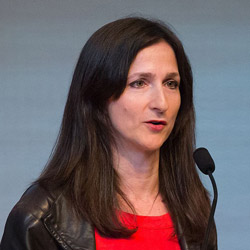
12. Sara Seager
Sara Seager has discovered over 715 planets. She has contributed to the finding of exoplanets. Exoplanets are planets outside the Solar System. To estimate the number of habitable planets in the Galaxy, Seager created a parallel version of the Drake equation. The Drake equation is a probabilistic argument used to estimate the number of active, communicative extraterrestrial civilizations in the Milky Way Galaxy.
Photo: Science History Institute, CC BY-SA 3.0, via Wikimedia Commons
13. Cecilia Payne-Gaposchkin
Cecilia Payne-Gaposchkin was an astronomer who discovered the composition of stars. She discovered that stars are made of hydrogen and helium by using a scale and determining the temperature of stars.
Photo: Smithsonian Institution from United States, No restrictions, via Wikimedia Commons
14. Valerie Thomas
Valerie L. Thomas invented the illusion transmitter. An illusion transmitter uses two parabolic mirrors to transmit 3-D illusions of an object. As of this day, Nasa continues to use the technology, which is also used in surgical procedures, televisions, and video screens.
Photo: NASA, restored by Adam Cuerden, Public domain, via Wikimedia Commons
15. Frances E. Allen
Frances E. Allen was a computer scientist who specialized in compilers; her work in optimizing and developing compilers is still used today. Several technologies benefited from her research and developments, like the Parallel FORTRAN Product, the COBOL Compiler, and the Stretch Harvest Compiler.
Photo: Rama, CC BY-SA 2.0 FR, via Wikimedia Commons
16. Shafrira Goldwasser
Shafrira Goldwasser is a computer scientist who has significantly contributed to cryptography. Cryptography is the practice and study of techniques for secure communication in the presence of hostile action.
Goldwasser has specialized in the research of computational complexity theory and computational number theory. She also specializes in probabilistic encryption and zero-knowledge proof. Probabilistic encryption is the use of randomness in an encryption algorithm. Zero-knowledge proof or zero-knowledge protocol is a method by which one party (the prover) can prove to another party (the verifier) that a given statement is true while the prover avoids conveying any additional information apart from the fact that the statement is indeed true.
Photo: Weizmann Institute of Science, Public domain, via Wikimedia Commons
17. Helen Greiner
Helen Greiner co-designed the first version of the iRobot Roomba. She has worked for companies that deliver robots to the consumer market. She is the former CEO of CyPhy Work, Inc., a start-up company specializing in small multi-rotor drones for the consumer, commercial and military markets.
Photo: TechCrunch, CC BY 2.0, via Wikimedia Commons
18. Cynthia Breazeal
Cynthia Breazeal is a robotics scientist and entrepreneur who developed personal assistant robots. Her most recent work has focused on living everyday life in the presence of AI and gradually gaining insight into the long-term impacts of social robots.
Photo: Cynthiabreazeal, CC BY-SA 4.0, via Wikimedia Commons
19. Margaret Hamilton
Margaret Heafield Hamilton is a computer scientist and systems engineer who developed onboard flight software for NASA’s Apollo program and wrote software used by the U.S. Air Force to search for possibly unfriendly aircraft. When Margaret Hamilton worked on the Apollo Space Mission, she was in charge of all Command Module software for navigation and lunar landing guidance. She worked to gain hands-on experience when computer science courses were uncommon and software engineering courses did not exist. She is one of the people credited with coining the term “software engineering.”
Photo: Draper Laboratory; restored by Adam Cuerden., Public domain, via Wikimedia Commons
20. Adriana C. Ocampo Uria
Adriana C. Ocampo Uria is a Colombian planetary geologist who was the first to recognize, using satellite images, that a ring of cenotes or sinkholes is the only surface impression of the buried Chicxulub crater. The Chicxulub crater is an impact crater buried underneath the Yucatán Peninsula in Mexico. It was formed when a giant asteroid struck Earth. Adriana C. Ocampo Uria’s research contributed significantly to understanding this impact crater that killed a large part of the dinosaurs.
As lead Program Executive for NASA’s New Frontiers Program, she has oversight responsibility for the program. The New Frontier Program comprises the mission New Horizons, Juno, OSIRIS ReX, and Dragonfly. She is also currently the Program Executive of the Discovery Program Lucy mission. Lucy Mission was the first mission to explore the Trojans asteroids.
Photo: NASA/Aubrey Gemignani, Public domain, via Wikimedia Commons
21. Patricia Bath
Patricia Era Bath was an American ophthalmologist, inventor, humanitarian, and academic. She invented an improved device for laser cataract surgery. Her invention was called Laserphaco Probe, which she patented in 1986. The Laserphaco Probe is a medical device that ablates and removes cataract lenses. The device quickly and nearly painlessly dissolves the cataract with a laser, rinses and cleans the eye, and permits the easy insertion of a new lens. The device is used internationally to treat the disease and has successfully restored vision to people unable to see. Patricia Era Bath is also a holder of five patents; she founded the non-profit American Institute for the Prevention of Blindness in Washington, D.C.
Photo: National Library of Medicine, Public domain, via Wikimedia Commons
22. Limor Fried
Limor Fried is an American electrical engineer who has made significant contributions to the open-source movement and open-source hardware movement. Limor Fried is the owner of the electronics hobbyist company Adafruit Industries.
Photo: TechCrunch, CC BY 2.0, via Wikimedia Commons
23. Tu Youyou
Tu Youyou is a pharmaceutical chemist who discovered artemisinin and dihydroartemisinin used to treat malaria. Artemisinin and its derivatives can kill the life cycle of parasites faster than other drugs, and with other medicines, it has become the standard therapy for all malaria cases. Tu Youyou’s discovery has saved millions of lives.
Photo: Bengt Nyman, CC BY-SA 4.0, via Wikimedia Commons
24. Gladys West
Gladys West is a mathematician whose work developing satellite geodesy models was incorporated into the Global Positioning System (GPS). Gladys has also contributed to the mathematical modeling of the shape of the Earth.
Photo: US Air Force, Public domain, via Wikimedia Commons
25. Emmy Noether
Amalie Emmy Noether is known for her many contributions to abstract algebra. She developed theorems that are fundamental in mathematical physics. Noether’s first theorem states that every differentiable symmetry of the action of a physical system with conservative forces has a corresponding conservation law. Noether’s second theorem relates symmetries of an action functional with a system of differential equations. Noether’s theorem explains the connection between symmetry and conservation laws in physics.
Photo: Unknown author, derivative work Lämpel, Public domain, via Wikimedia Commons
Conclusion
All these women’s contributions are remarkable and remind us that despite the obstacles, challenging tasks can be completed with determination. I hope this list inspires you to explore the STEM field. I hope you remember this list if you ever asked if you know a woman who has invented, discovered, or significantly contributed/benefited our world.


